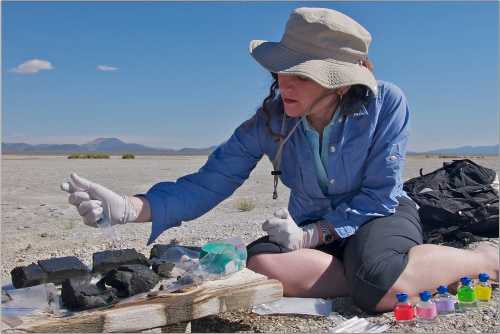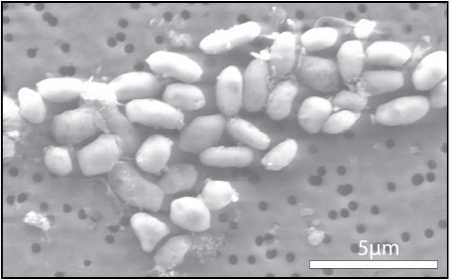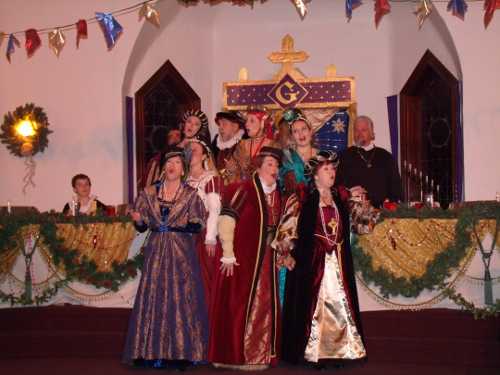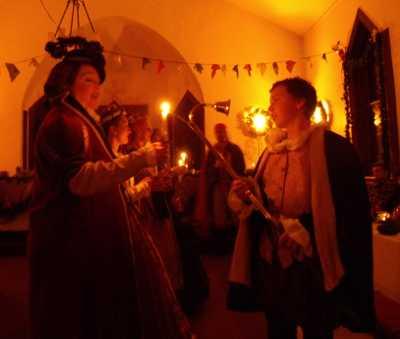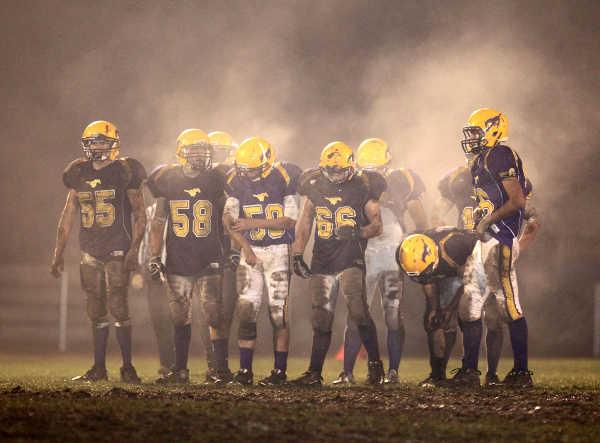
Middletown's offense awaits the end of a timeout late in the game as the fog rolls over Bill Foltmer Field on Friday, Dec. 3, 2010, in Middletown, Calif. Photo by Ed Oswalt.
MIDDLETOWN, Calif. – It was trench football. It was hit-to-hit, yard-to-yard, down-to-down good old-fashioned mud bath football.
In short, it was the kind of game the Middletown Mustangs – with their stalwart defense and nose-to the-grindstone offense – excel at.
And excel they did, knocking out the Healdsburg Greyhounds – the North Coast Section (NCS) Division IV tournament’s No. 1 seed – 10-0 Friday night in Middletown before a large, raucous crowd.
“It was a battle,” Mustangs Head Coach Bill Foltmer said after the game. “Every yard, every run, every play was hard-fought yards. Both sides took a beating; it was a very physical football game.”
Sure, it was yet another Mustang shutout, and those statistics – five of their last six games have been shutouts, and eight of 13 games this season – are impressive by themselves, but this shutout was different.
This was no cakewalk; this was a battle of wills. And that battle was lead by Middletown’s hard-hitting, aggressive running back and linebacker Jacob Davis.
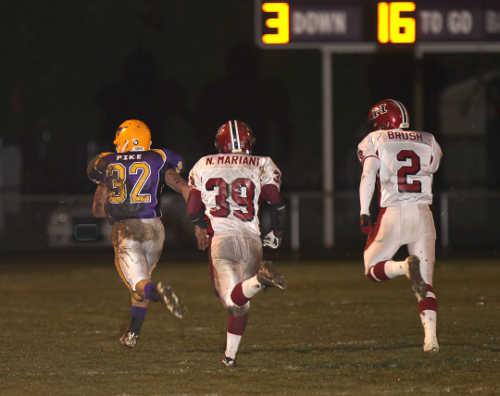
After catching a Kyle Brown pass on third-and-16, David Pike made a 79-yard play, scored the only touchdown in the North Coast Section Division 4 semifinal game on Friday, Dec. 3, 2010, in Middletown, Calif. Photo by Ed Oswalt.
“Jake Davis is amazing,” Healdsburg Head Coach Tom Kirkpatrick said about the Middletown senior. “There were plays that looked like we were going to have some room to run, and he would just fly into the ball – an outstanding player.”
The action started early, on the Mustangs’ opening possession.
With Middletown trying to establish a running game and Healdsburg pushing back hard, David Pike caught a Kyle Brown screen pass on third and 16, broke a couple of tackles and streaked 79 yards downfield to score the game’s only touchdown.
Surefire kicker Danny Cardenas put the extra point through the uprights, the Mustangs took the lead 7-0, and the slog continued.
Healdsburg used most of the remaining first quarter to grind downfield, starting from their own 15 and needing two critical fourth-and-inches to make it down to Middletown’s 10-yard line, but on their second fourth-and-short and with their backs against the wall in the red zone, offensive lineman Luke Parker broke through the Healdsburg line and stopped the Greyhounds short.
“Our kids played hard tonight, and I’m so proud of them,” a jubilant Foltmer said after the game. “It was a great win against a great opponent.”
The game’s only other score came in the second quarter, when the Mustang’s needed 12 plays, a pass interference call and a horse-collar penalty before Cardenas kicked a 27-yard field goal to put Middletown ahead 10-0.

David Pike's 89 yards rushing led all groundgainers on a night of tough defense during the North Coast Section Division 4 semifinal game on Friday, Dec. 3, 2010, in Middletown, Calif. Photo by Ed Oswalt.
Of the Cardenas field goal, Foltmer said, “That was big, because now it’s a two-score game.”
Although the Greyhounds found some hard-earned forward progress in the second quarter, their attempts to even the score were twice thwarted by critical interceptions from cornerback Andres Fernandez, and the clock ran out with Healdsburg trailing 10-0.
“They did a good job of stopping us, and I thought we did a good job of stopping them,” Foltmer said about the game. “It was just a battle, you know?”
The second half was more of the same – a back-and-forth struggle in the trenches, fueled by the Middletown loud crowd, with both teams slogging downfield at times, only to see their efforts come up short.
Healdsburg’s fate was sealed with two and a half minutes left in the game, when Connor Chick intercepted a Max Opperman pass at Middletown’s 31-yard line, and the Mustangs ran out the clock to end the classic struggle.
“They played really hard, they played as hard as they could,” Kirkpatrick said about his Greyhounds, “and I told them, there was no problem with effort. This was not an effort game; this was an execution game.”
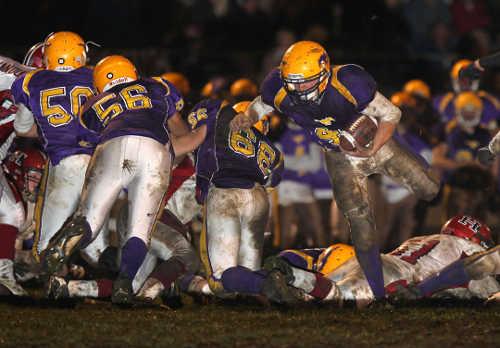
Jake Davis had 51 yards on 10 carries for Middletown in their 10-0 semifinal win over Healdsburg on Friday, Dec. 3, 2010, in Middletown, Calif. Photo by Ed Oswalt.
The Greyhounds successfully executed 12 out of 23 passes (with three interceptions) for 145 yards, while rushing 83 yards in 21 carries. The Mustangs logged 143 yards in the air on four of 10 passing, and 132 yards in 36 carries.
Having now secured a spot in the finals of the NCS tournament, Foltmer lamented, “People don’t understand: it’s not that easy to get there. My last time we were in the finals was 10 years ago.”
He added, “Normally, we tell the kids, ‘Hey, make the best of your year,’ and if it doesn’t work out this year for me, I’ve always got next year. But I’ve been telling this group that this might be my best shot at a section title with this group of kids.”
In a bit of irony, the Mustangs will end the season as they began it: by playing the Salesian Pride, who advanced to the NCS finals with a 76-28 trouncing of the Ferndale Wildcats Saturday in the tournament’s other semifinal game.
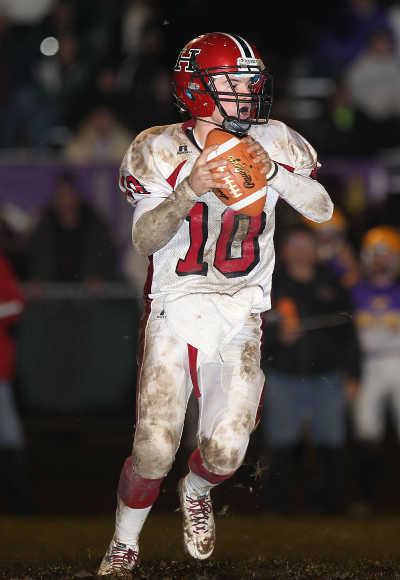
Healdsburg quarterback Max Opperman passed for 145 yards and ran for 49 more during the North Coast Section Division 4 semifinal game on Friday, Dec. 3, 2010, in Middletown, Calif. Photo by Ed Oswalt.
Middletown lost to Salesian 57-52 in that game – their season opener, and their only loss of the year – but powerhouse Jake Davis sat out the game with a broken jaw.
The Mustangs-Pride final will be held at Alhambra High School in Martinez on Saturday, Dec. 11, at 7 p.m.
“Yeah, we’ll go scout Salesian and Ferndale tomorrow,” Foltmer said Friday night about the other NCS semifinal game, “but we worked so hard this week, and with a big win like this, I just want to enjoy it.”
Healdsburg’s Kirkpatrick looked across the field to the Middletown side after the game and said with simple admiration, “That’s a great high school team right there.”
Follow Lake County News on Twitter at http://twitter.com/LakeCoNews , on Facebook at http://www.facebook.com/pages/Lake-County-News/143156775604?ref=mf and on YouTube at http://www.youtube.com/user/LakeCoNews .

The Middletown Mustangs will try to keep their heads on straight when they tackle Salesian High School of Richmond in the NCS division 4 title game. Salesian demolished Ferndale 76-28 in their semifinal match Saturday, Dec. 4, 2010. The championship game will take place at Alhambra High School in Martinez, Calif., starting at 7 p.m. Saturday, Dec. 11, 2010. Photo by Ed Oswalt.
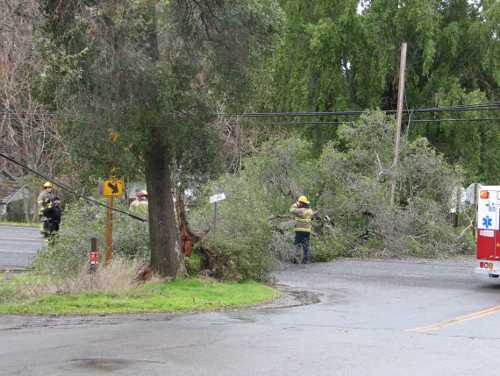

 How to resolve AdBlock issue?
How to resolve AdBlock issue? 








